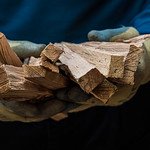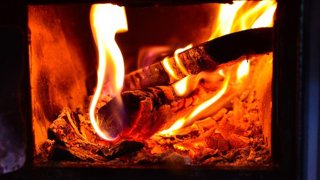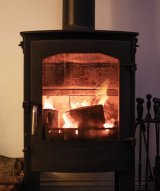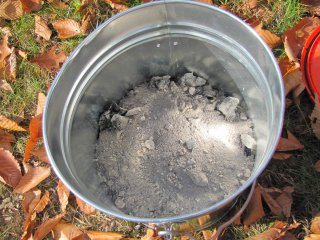Tips for a Better Burn
The Burn Wise Program ran from 2009 to 2025. The website serves as a historic record; EPA is no longer updating program content as of October 30, 2025.
Although lighting a fire is pretty simple, a couple of tips can make it faster and cleaner.
Prepping Wood
Split the wood into smaller pieces. It will season more quickly with more exposed surface area, is easier to load into your firebox, and burns more efficiently.

- Bring wood, particularly kindling, inside the night before you use it. This will get it to room temperature and pull outside moisture from the wood for a better burn.
- Knock the bark off the wood before bringing it into the house. Some bark can be fire resistant.
- If your wood still has bark on it, put the split side or the non-bark side of the log toward flame.
- Use soft woods or less dense hardwoods like maple, balsa and linden/basswood when starting your fire.
Prepping the Fire
- Use all-natural fire-starters; some will burn up to 15 minutes, making it easier to get your fire going.
- Natural fire-starters will also help warm your flue so it starts drafting sooner (pulling the smoke up your chimney).
- Use small, dry kindling to get your fire started and add small pieces of firewood after it's burning well.
- Keep the stove door open for a few minutes to allow your fire to get plenty of air. It will start much faster. Don’t leave the room until you've closed the stove door. Also, follow the manufacturer's instructions.
- Create space between pieces of wood to allow for better air flow.
Move some coals out from directly under the wood. This allows better air flow between the wood and hot coals and speeds up combustion.

- Create a valley of coals then place your wood across the valley. This creates better air circulation so the wood ignites more quickly and burns more efficiently.
- After loading the wood and once you see smoke in the firebox, use a long-handled butane lighter and “light” the smoky area to get fire going. This prevents smoldering.
Maintaining a Fire
When reloading or adding wood to the fire, slowly open the door to reduce the chance of wood smoke spilling back into the room.

- To ensure your fire is burning efficiently, go outside and look at the chimney. If you see smoke that usually means the fire needs more air.
- Try to keep a hot coal bed for easy restarts – leave about an inch of ash in your firebox to help keep the hot coals insulated.
- In a secondary combustion stove, provide enough airflow to maintain a steady flame until the tail end of the fire.
After the Fire

- To reduce ash and dust inside the room, remove the ashes from the stove after the ash has cooled, not when it's hot. Cooler ashes are also significantly less flammable.
- Dispose of ash in a metal container away from any flammable materials, including your house, to reduce risk of fire.
